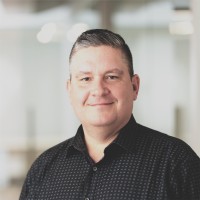 The network edge continues to be a hot topic as we move deeper into 2021, as the business models many have put forth are now put to the test of actual deployment and scale. One of the early visionaries in this space that is now building in earnest is Vapor IO, which has deep relationships with Crown Castle and last year added a partnership with Digital Realty as well. With us today to talk about Vapor IO’s approach to the edge and where expects to go in the quarters and years ahead is founder and CEO Cole Crawford, joined by CMO Matt Trifiro.
The network edge continues to be a hot topic as we move deeper into 2021, as the business models many have put forth are now put to the test of actual deployment and scale. One of the early visionaries in this space that is now building in earnest is Vapor IO, which has deep relationships with Crown Castle and last year added a partnership with Digital Realty as well. With us today to talk about Vapor IO’s approach to the edge and where expects to go in the quarters and years ahead is founder and CEO Cole Crawford, joined by CMO Matt Trifiro.
TR: You founded Vapor IO in 2015 before the edge was cool. What opportunity did you see and what made you decide to follow up on it?
CC: Vapor was born out of the need to intersect two technology domains: the democratization, or quantization of the IT stack, and the need to converge and automate the wireless / wireline networks. It seemed reasonable to us that the combination would bring the internet closer to the eyeballs. I wouldn’t say that Vapor did anything prophetic, we just had access to some good knowledge and a view that we could affect change. We knew that there were things that needed to be built in order to fulfill the promises of what the edge could be. There were, at that time, two completely different networks built on completely different technologies, and they were racing towards each other on a collision course. Telco networks were built one way, while the cloud and the internet backbone were built a different way. It wasn’t for us to choose who would win that battle. But we knew what the battlefield should look like. Our mission was/is to build the parameters in which the internet backbone and these wireless networks could fulfill what they were promising. We wanted to fix the automation of both the physical data center and the network in a way that would satisfy and enhance both worlds.
TR: Everyone seems to have their own viewpoint on what the edge is and should be. What is your viewpoint on the edge in today’s market?
CC: I think that there’s two definitions of the network edge: logical and physical. The logical network edge is about programmability. It’s about creating better resiliency through routing. In today’s telco world we talk about fronthaul or backhaul. Is data moving towards the user or away from the user? What we don’t talk a lot about as an industry is mid-haul, but a forcing function in the form of OpenRan7.2 functional split is changing that. The physical network edge is about the speed of light. You’re not going to get under five milliseconds of round trip latency if you’re not within a certain physical distance from the thing you’re trying to connect to, and you’re certainly not going to get to 75 microseconds if you aren’t a lot closer than what’s needed for 5ms. We focus on both in the form of our fully virtualized and software orchestrated interconnection. Modular data centers are not what makes the edge work, Sun Microsystems built a modular data center in the late ‘90s. What we care about is what happens to the bits that need to pass through that modular data center. Sun Microsystems’ John Gage famously said, “The network is the computer” in a 2008 Super Bowl commercial and he was absolutely right, just a decade too soon.
TR: So how does that manifest physically? What should happen to those bits that isn’t happening today?
CC: Suppose I’m on a carrier in Austin, Texas where my eCPRI connection ends in St. Louis, Missouri. There’s no massive IX in St. Louis for interconnection/peering, so that gets backhauled further to 55 Marietta in Atlanta, from which I can then be connected to other enterprises, clouds, etc. I shouldn’t have to go to Atlanta to connect to other networks from Austin, Texas. That’s what Vapor IO is fixing. Our mission statement is to re-architect the internet for good, and we mean good as a double entendre because it needs to be permanent but it also needs to be better for humans.
TR: That’s a big job, what components of it does Vapor IO focus on and what does it leave for others to solve?
CC: People often put Vapor into this modular data center category, but it’s not the most exciting part of our business. There are companies that are really good at the manipulation of atoms, but when you talk about the edge it’s the manipulation of bits that is incredibly interesting and compelling. We don’t believe that bringing the economies of scale down from a large data center design perspective works for the edge. There’s not enough land for us at most of these fiber aggregation points to go overbuild three HVAC systems, three generators and three UPS systems in case you lose your utility power. Therefore, when we build in a market, we don’t do that in a scale-up manner, we scale out like a multi regional cloud campus though we do that at city-scale. It becomes a mesh network inside of a metro, all connected by fiber, and more resilient than you could be in a single data center park. The dirty little secret of data centers is that if you suffer something like an arc flash in a UPS system, the fire department just shuts you down. Data center outages happen even when they are overbuilt vertically. Because Vapor is distributed, you get lower lateral fees for enterprises for last mile connectivity, lower latency where you want it, route diversity where you need it, and cloud onramps where you want them. Once you factor in Vapor IO’s Kinetic Edge Exchange for interconnection and peering capabilities, you end up with an architecture with the flexibility of keeping traffic local by supporting a local network handoff to a cloud company or an enterprise company.
TR: So where have you deployed this type of infrastructure now and where are you deploying it in 2021?
CC: We focus on tier-one and tier-two markets. Our fully operational markets today are Dallas, Chicago, Pittsburgh, Atlanta, and very soon, Phoenix and Las Vegas. Then we’ve got an additional 32 markets that are all in various stages of deployment. Behind those is another list of 32 markets. We are always in a rolling deployment schedule where we’re building and constructing, zoning and permitting, and we’re constantly talking to our customers about where they want to go next.
TR: What part do local regulatory conditions play in your plans?
CC: Not all jurisdictions are built the same, and not all zoning and permitting processes are the same. Some cities take years to grant zoning permits for three-phase power. But part of the secret sauce for Vapor is that we started those processes in some of those cities years ago. We understand the process of engaging with the municipality and the jurisdictions to get our infrastructure up and operational.
TR: Do you see opportunities in smaller Tier 3 and 4 markets?
CC: First and foremost, we are customer led. If the economics makes sense, we’ll build it. And we want to be part of the data flow. There are a lot of interesting things that we’ve built that the industry will come to appreciate sooner than later, and we have open-sourced a lot of code that is good for these new networks. There are some really compelling and interesting use cases in Tier 3, 4, and more rural markets. But it is just the reality of things that there is already data gravity in these Tier 1 and Tier 2 cities, and you can’t bypass that. Most airlines operate by building big hub cities and then branch out from those. But you need to establish yourself in that hub city first, and that’s exactly how we’re building Vapor.
TR: How do you approach the problem of scaling operationally across a highly distributed physical footprint?
CC: Scaling is a function of two things. It is a function of ability: how much can you take on, how many people can you throw at something. And that is fundamentally dependent on how much capital you have to make it happen. We know what it costs to deploy this type of architecture, and I materially discount almost any edge company that says they are launching 10+ cities without first raising the capital. Second is about relationships with tower operators, fiber providers, real estate companies, and municipalities. It’s about engaging with utility and municipality to get the permits you need. We have had over half a decade now to figure that out, and while we haven’t perfected that process we have gotten pretty good at it. Of course, I’m not going to share the details of how we do it because it’s part of our secret sauce, but it’s closer to rinse and repeat than you might expect.
TR: Do you ever repurpose existing facilities, or are greenfield builds the rule?
CC: I have a ton of respect for anybody that’s looking for a new solution to something that was an old problem, such as the central office. I started my career working in central offices @ US West. That being said, I also helped build Open Compute. We know what it costs per megawatt to brownfield retrofit a central office and we know what our customers are looking for in their 3/5/7 year spend, Most hyperscale companies want to certify one thing that can be deployed a thousand times the exact same way every single time, as opposed to coming in and certifying one central office at a time after the retrofit. One of those gets you to mass market at scale very quickly, the other one is a long and arduous process. We’ve chosen the former. Their field team or our field team can walk into any Vapor datacenter in any market, and the fire suppression system will be in the same place. The UPS is in the same place. The interconnection rack is in the same place. The APIs that they use in Dallas are the same APIs in every other market. That means a much lower barrier of entry to making the edge scale city by city, country by country whether it is Tier 1, 2 or 3 city.
TR: Are you adding any technological capabilities to your current portfolio in 2021?
MT: We are now deploying the VEM20. VEM stands for Vapor Edge Module, which are the smalles form factor that we have designed to date. The 20 refers to the number of kilowatts of IT gear it can handle. The VEM20 is a large street-side cabinet, as opposed to a VEM180 which is a large 30+ foot facility. It is a lot easier to permit and can be manufactured and deployed much more quickly. So you’ll see a lot more cities coming up faster, and starting out with lower capacity.
CC: Yes, it is a really important arrow in our quiver. It is a data center designed for two 10KW racks, and we don’t need a trailer or a crane. We can put one on the back of a Ford F-150, and a forklift can move it into place. We can then come back with additional capacity, and we can take a rack out of the VEM20 and roll it directly into a VEM180.
TR: What new sources of demand do you see ahead as we move into 2021?
MT: I think one of the things we will see a lot of in 2021 is private wireless and near-prem applications. One of the fastest growing sources of demand for our networking platform is from both established telcos and competitors using unlicensed spectrum who are offering enterprise private wireless (or fiber) with near-prem compute. If I have a factory but don’t have a data center yet need to put in some data center equipment to support machine learning, I have a choice. I can build a data center. I can buy one and drop in parking lot that I have to capitalize, staff, and monitor. Or I can place my equipment in a nearby facility operated by someone else that is half a millisecond away. I then get all the privacy of an on-campus data center, but I’m not running and maintaining it.
And the other thing I think is really interesting is the interjection of telemetry. When you get into low latency use cases and you are trying to provide software-based resilience, you need predictive failover. The minute that an environment becomes degraded, e.g. network congestion increases or it switches to UPS power, the decision to start up new warm workloads and transition traffic over those workloads must happen completely transparently just via SDN. This allows you to do not only metro-redundancy, but potentially real redundancy – to be able to shift capacity around not just within a metro, but within adjacent networks. We instrument all of the equipment in the data center: chillers, air temperatures, airflows, power status, network status, etc., and we provide this as a stream of data to our customers and their vendors. This data can be ingested by companies to provide a turnkey services based on our virtualized data center.
TR: Thank you for talking with Telecom Ramblings!
If you haven't already, please take our Reader Survey! Just 3 questions to help us better understand who is reading Telecom Ramblings so we can serve you better!
Categories: Datacenter · Industry Spotlight · Metro fiber






Discuss this Post